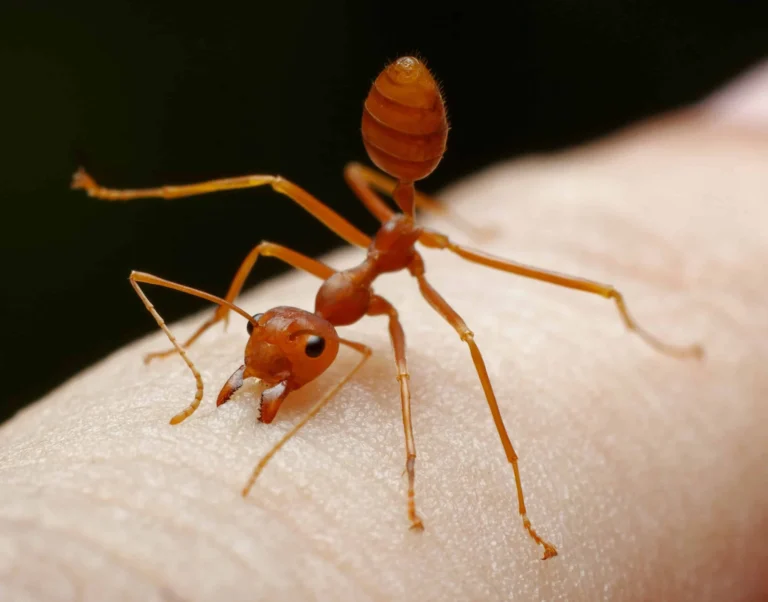Ant bites can be more than just a nuisance. They can cause irritation, discomfort, and in some cases, more severe reactions. Whether you’re hiking in the woods or simply spending time in your backyard, it’s important to recognize the signs of an ant bite and know how to treat it quickly to prevent further issues.
What Are Ant Bites?
Ant bites occur when ants use their mandibles to grasp and bite into the skin. While most ant bites are relatively harmless, certain species of ants can cause allergic reactions or even transmit diseases. Not all ants bite humans, but those that do can leave behind itchy, painful spots that vary in severity depending on the species and your body’s reaction.
Check Out:
Spider Bites: Signs and Symptoms
Common Ant Species That Bite
- Fire Ants: Known for their aggressive behavior, fire ants deliver painful stings and bites that can cause swelling and severe allergic reactions.
- Carpenter Ants: These ants don’t typically bite to defend themselves, but when they do, their bites can cause minor irritation.
- Pavement Ants: While less aggressive, pavement ants can bite if provoked. Their bites usually result in mild redness and discomfort.
- Bullet Ants: These ants have one of the most painful stings known to humans. Fortunately, they are not commonly found in residential areas.
Recognizing the Symptoms of Ant Bites
Understanding how to identify an ant bite is essential for proper treatment. Ant bites typically cause a variety of symptoms, from immediate discomfort to long-lasting reactions.
Visual Indicators
Upon being bitten, you’ll often notice immediate signs such as:
- Redness and Swelling: The area around the bite may turn red and swell up. In severe cases, this can progress to large, inflamed welts.
- A Small Puncture: Ant bites can sometimes leave a small puncture wound, especially if the ant was an aggressive type like a fire ant.
- Blister Formation: Some ant bites, especially those of fire ants, can form small blisters that may break open if scratched.
Sensory Symptoms
Beyond the visual signs, the following sensory symptoms are common:
- Itching: One of the most noticeable symptoms of an ant bite is intense itching, which can be bothersome and cause you to scratch the area.
- Pain: A sharp, stinging pain is common, particularly with fire ants, whose bites are known to be quite painful.
- Burning Sensation: Many people report a burning sensation at the site of a fire ant bite, which can last for several minutes.
Related:
Aedes Aegypti Bite: Early Signs and Symptoms to Watch
How to Treat Ant Bites Quickly
While most ant bites are not dangerous, treating them quickly can help alleviate discomfort and reduce the risk of infection. Here’s a step-by-step guide to help you treat ant bites effectively.
First Aid for Ant Bites
- Clean the Area: Start by washing the bite with soap and water to remove any dirt or bacteria. This will help prevent infection.
- Apply a Cold Compress: Use a cold cloth or ice pack to reduce swelling and numb the pain. Apply it for 10-15 minutes at a time.
- Topical Treatments: Over-the-counter anti-itch creams or hydrocortisone ointments can be applied to reduce itching and inflammation. Calamine lotion is another popular option.
- Take Pain Relievers: If the pain is unbearable, over-the-counter pain relievers like ibuprofen or acetaminophen can help.
- Avoid Scratching: It can be tempting, but try not to scratch the bite, as this can lead to infection.
When to Seek Medical Help
In most cases, ant bites are not serious, but there are certain situations where you should seek medical help:
- Severe Allergic Reactions: If you experience difficulty breathing, dizziness, or swelling of the lips or tongue, it’s important to seek emergency medical attention immediately. This could indicate anaphylaxis, a life-threatening allergic reaction.
- Infection: If the bite becomes increasingly red, swollen, and warm to the touch, or if you notice pus draining from the bite, this could be a sign of infection and you should see a doctor.
- Multiple Bites: If you’ve been swarmed by ants (like fire ants), and have many bites, it’s a good idea to get checked out for any complications.
Preventing Future Ant Bites
While you can’t always avoid ant bites, there are several steps you can take to reduce the risk of being bitten in the future.
Ant Repellents and Barriers
- Use Insect Repellents: Apply an insect repellent that contains DEET or picaridin to exposed skin. This will help ward off ants and other insects.
- Seal Entry Points: If ants are getting into your home, inspect windows, doors, and cracks in walls. Use caulk to seal these entry points and stop ants from entering.
- Remove Food Sources: Ants are often attracted to food, so keep kitchens and dining areas clean. Store food in sealed containers to avoid attracting ants.


